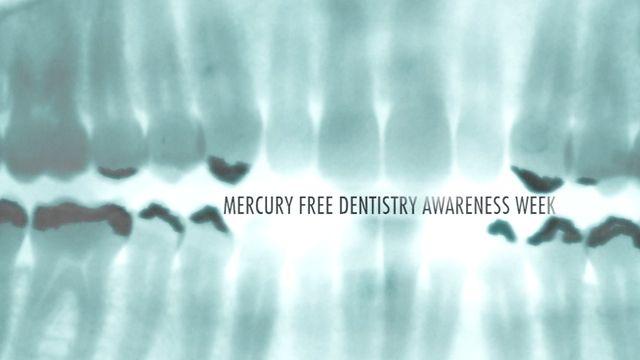As we noted last time, although dental amalgam is addressed in UNEP’s global mercury treaty, an enormous amount of work remains to be done. More consumers must be informed that those “silver” fillings are nothing of the sort – and why it matters to their health and the health of our planet. Policymakers must be taught, as well, and pressed to enact and enforce regulations ending use of this potent neurotoxin.
 This is why for the third year in a row now, we recognize Mercury-Free Dentistry Week, a joint campaign by Dr. Mercola and Consumers for Dental Choice that began this past Sunday.
This is why for the third year in a row now, we recognize Mercury-Free Dentistry Week, a joint campaign by Dr. Mercola and Consumers for Dental Choice that began this past Sunday.
Once again, Dr. Mercola has pledged to match, dollar-for-dollar, each contribution made to CDC to support their crucial work on the mercury issue – up to $75,000 (a $25,000 increase over last year’s pledge). Make your tax-free gift before September 21, and you have double the impact in supporting a healthier, more sensible kind of dentistry and a healthier world.
For despite what pro-amalgam forces like to say, the mercury in amalgam doesn’t all stay in the filling. Vapor is constantly released from the pressures of biting, chewing and swallowing; through temperature changes; from brushing and polishing.
This fact is highlighted in a study just published in the Journal of Occupational Medicine and Toxicology. Simply, the scientists analyzed urine samples for mercury, testing more than 2000 individuals both with and without the familiar chelating agents DMSA and DMPS. (A chelator is a substance that draws metal out of tissues.) They also noted the number of amalgam filling surfaces each participant had.
Urinary mercury levels were statistically significantly higher in participants with amalgam surfaces, with an average difference of 0.55 μg/g-creatinine. Per amalgam surface, we estimated an expected increase of 0.04 μg/g-creatinine. Measured urinary mercury levels were also statistically significantly higher in participants with dental amalgam surfaces following the oral administration of 2,3-dimercaptopropane-l-sulfonate (DMPS) and meso-2,3-dimercaptosuccinic acid (DMSA) which are used to mobilize mercury from the blood and tissues.
Our estimates indicate that an individual with seven or more dental amalgam surfaces has 30% to 50% higher urinary mercury levels than an individual without amalgams.
Because of this, the authors conclude “that continued use of silver amalgam dental fillings for restorative dentistry is a non-negligible, unnecessary source of mercury exposure considering the availability of composite resin alternatives” [emphasis added]
More, the use of alternatives in those countries that have already phased out amalgam – largely for environmental reasons – has been a very positive experience. As a recent BDJ article on Norway’s phase-out process put it,
Though based on anecdote, it is understood that the profession in Norway would not wish to turn the clock back and return to ‘old style’ care based on the predominant use of dental amalgam, as is presently still the case in the UK. It is further understood that there is a growing sense of relief among the dental profession in Norway that it is no longer contributing, albeit in a relatively small way, to an important and pressing environmental issue.
That’s not to say it was an entirely easy or simple process – just a successful one. (You can read even more about it here.)
And now there is real momentum.
The Minamata Treaty necessitates a phase-down in the use of dental amalgam. With overall plans to ban the use of certain mercury containing products by 2020, such as light bulbs and cosmetics, the likely trend towards a phase-out of amalgam in coming years is obvious.
Maybe this also explains a little more of why the ADA got so bent out of shape over Dr. Oz earlier this year: Mercury-free is winning.